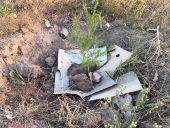
 2
2




Check out Redhawk's soil series: https://permies.com/wiki/redhawk-soil





List of Bryant RedHawk's Epic Soil Series Threads We love visitors, that's why we live in a secluded cabin deep in the woods. "Buzzard's Roost (Asnikiye Heca) Farm." Promoting permaculture to save our planet.




Check out Redhawk's soil series: https://permies.com/wiki/redhawk-soil
















List of Bryant RedHawk's Epic Soil Series Threads We love visitors, that's why we live in a secluded cabin deep in the woods. "Buzzard's Roost (Asnikiye Heca) Farm." Promoting permaculture to save our planet.

 1
1




Hans Albert Quistorff, LMT projects on permies Hans Massage Qberry Farm magnet therapy gmail hquistorff
 3
3




Hans Quistorff wrote:Note in this video that bones nutshells ect. can be turned into char using this method. Alternatively I use a long holow leg bone to add liquids to my wicking beds.
A build too cool to miss:Mike's GreenhouseA great example:Joseph's Garden
All the soil info you'll ever need:
Redhawk's excellent soil-building series





 1
1




Check out Redhawk's soil series: https://permies.com/wiki/redhawk-soil

|
An electric car saves 2 tons of CO2 out of 30. This tiny ad is carbon neutral.
Learn Permaculture through a little hard work
https://wheaton-labs.com/bootcamp
|


